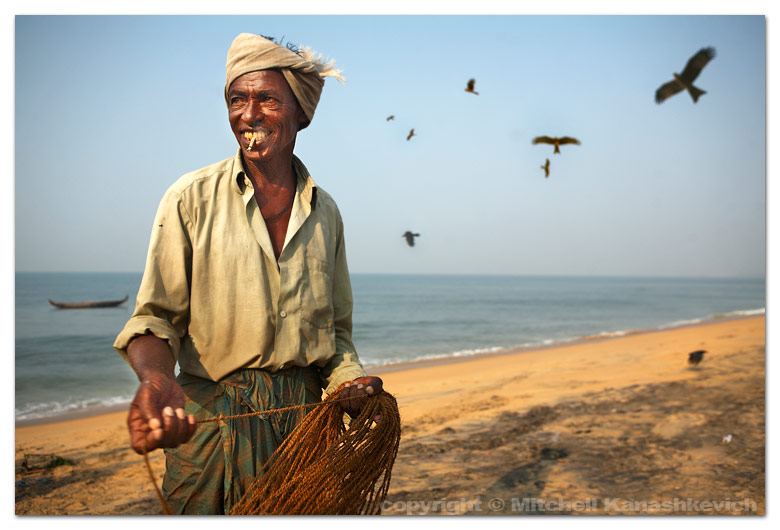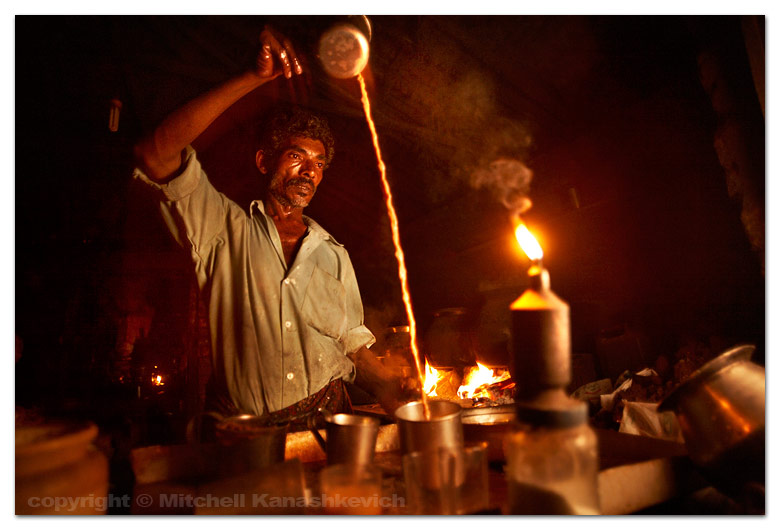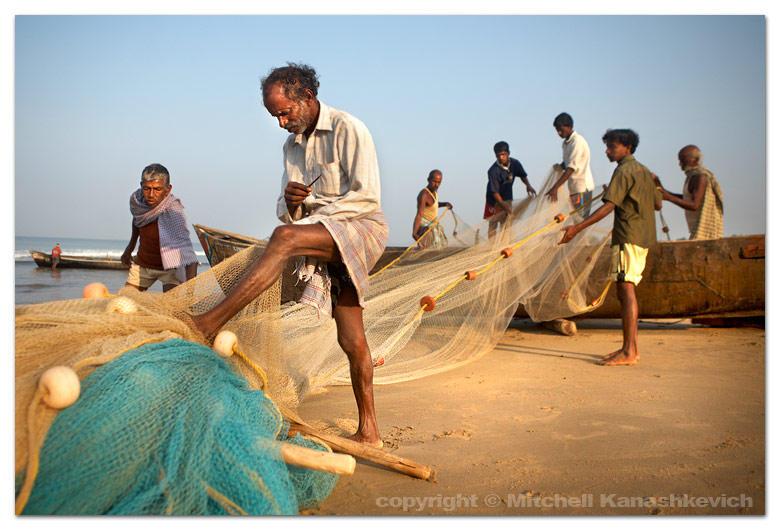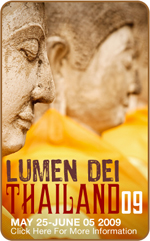I’ve spent the last three weeks in the small town of San Joaquin on Panay island in the Philippines. Due to my “activities” - the constant waking up in the morning and the fact that swimming in the middle of the sea, while going out with the fishermen can be rather physically demanding (for someone who’s not in the best shape) I’ve been too fatigued to write anything substantial during this time.
These are the Good Times
 At last we have reached a place which validates our reasons for coming to Kerala - North Travancore. This will be the last of what we see of "God's Own Country" before we move on, and we'll certainly be left with a nice impression. The region represents the Kerala which I had hoped existed, but only had glances of so far - North Travancore has fishing settlements and harbors, quiet villages along the backwaters and in the city of Kollam there is even an atmospheric, bustling fruit and spice market. I have encountered all that I had hoped. The region is a paradise for a photographer, or at least a photographer with a motorcycle, as the places of photographic interest are not exactly within walking distance of each other.
At last we have reached a place which validates our reasons for coming to Kerala - North Travancore. This will be the last of what we see of "God's Own Country" before we move on, and we'll certainly be left with a nice impression. The region represents the Kerala which I had hoped existed, but only had glances of so far - North Travancore has fishing settlements and harbors, quiet villages along the backwaters and in the city of Kollam there is even an atmospheric, bustling fruit and spice market. I have encountered all that I had hoped. The region is a paradise for a photographer, or at least a photographer with a motorcycle, as the places of photographic interest are not exactly within walking distance of each other.
The Photos
One of my biggest photographic obsessions is fishing villages and fishing harbours. I love of the sea and seafood, and sometimes I not so secretly wish for a lifestyle like the fishermen that are in my images. I am fascinated by these men, they're brave, tough and while often crude, they are always full of life and humor.
In Kollam, the biggest city of North Travancore I finally satisfied my last for all photographic things fish-related. Along the shoreline North and South of Kollam Beach there are a few picturesque fishing settlements. Now, picturesque doesn't mean that they're ideal places to hang out. The stench of fish fills the air, rubbish is everywhere and in the morning, walking along the shoreline is like walking through a minefield. Let me explain - the fishermen, like most of their fellow countrymen make crapping one of the first priorities to begin the day, but unlike most of their fellow countrymen they take a crap directly on the beach. I'm sorry for devoting attention to this, but the crap really is a big part of the experience of a morning walk along the shore - one wrong move, and you're in trouble.
While shooting the image at the top of the post I was confronted with a rather strange predicament. As usual I had to look under my feet to avoid the "mines" on my way towards the fishermen, but then as I went into the water, Tanya noticed something floating and being thrown back to shore. It was a piece of crap that simply wouldn't agree to be taken away by the sea and it seemed as if it was stalking me. Now I had two things to worry about - the waves that could damage my camera and the floating crap that could leave me with a psychological scar. In-between crouching for the shot, standing up when the waves came and dodging the piece of crap I managed to get a few images, this is one of them.
They say that this fishing technique is as old as time itself. The net is taken out from the shore, it's spread by a few boats, sometimes over quite a distance. When everything is ready, the boats signal to two groups of men on shore, one group at each end of the net. The groups begin to pull and start moving sideways towards each other, to form a circle with the net. When this is done, the pulling gets more intense, everything within the circle is captured and as the net makes its way towards the shore, the pulling becomes more difficult. More men join in (this shot was taken towards the end). The final moments are quite amazing. The fishermen chant to encourage each other, their voices join into a melody that resembles a primeval war-cry, the tempo gets faster, as the catch approaches the shore, the volume rises. The full net is carried onto the beach, the fish are sorted and distributed among the families of the fishermen. If the catch is good, some big fish will have made their way into the net, it is usually sold and the money is divided. On this occasion the catch was nothing more than a load of tiny silver fish, which will only be used for curries or dried under the sun. A few disappointed looks, a few sighs, but this is just another day at work for the fishermen. The net is packed up, washed in the ocean and spread out to dry till next day.
 Men unloading sharks from a boat at Neendakara Fishing Harbour. This was probably one of the most, if not the most bustling fishing harbor that I had ever been to. You'd think that it would make an ideal photographic spot, which it can, but not without difficulties. The light was great, it was early morning, but there was just way too much happening. You really had to decide what you wanted to focus on or you'd shoot a lot of everything and nothing really worthwhile.
Men unloading sharks from a boat at Neendakara Fishing Harbour. This was probably one of the most, if not the most bustling fishing harbor that I had ever been to. You'd think that it would make an ideal photographic spot, which it can, but not without difficulties. The light was great, it was early morning, but there was just way too much happening. You really had to decide what you wanted to focus on or you'd shoot a lot of everything and nothing really worthwhile.
 South of Kollam Beach - An elderly fisherman packing up the net, while crows and eagles circle in search of leftovers.
South of Kollam Beach - An elderly fisherman packing up the net, while crows and eagles circle in search of leftovers.

 Top: Old fisherman pulling in the catch, South of Kollam Beach.
Top: Old fisherman pulling in the catch, South of Kollam Beach.
Middle: Fishermen push the boat out to sea, as the sun is about to rise, South of Kollam Beach.
Bottom: A fisherman and his wife in a Catholic settlement North of Kollam Beach (most of the fishermen in this area seem to be Catholics).

 Top: Namboodiri caste (Keralan priest) man and boy atop a decorated elephant during Gaja Mela, Rural Travancore.
Top: Namboodiri caste (Keralan priest) man and boy atop a decorated elephant during Gaja Mela, Rural Travancore.
Bottom: Couldn't resist taking a shot of this tea maker at Gaja mela. There was a power cut (very usual all over Kerala) and the only light came from the kerosene lamp and the fire, making his little tea-hop, seem rather mysterious. I shot a few frames of the man and had a couple of teas while doing it. When I asked how much for the tea, he waived his hands to sign "don't worry about it". I insisted, but he repeated the same thing. That's the generosity and hospitality I have come to love in India.
New Year, Giant Prawns and Kerala...finally
 Yes, my first blog entry for 2009 is well over due, but we are on the road after all and we are exhausted. Yesterday we finally arrived in "God's Own Country" - Kerala. We watched sunset from the beach, but I was so tired that I fell asleep right there on the sand. We are already around 2000km from Bundi - the place where we started our motorcycle journey. The way from Goa to Kerala isn't so long, but it has been more tiring than our other journeys. National Highway 17 is going into my books as one of the crappiest major roads in India, albeit one of the more beautiful.
Our New Year's Eve was one of the best I've had, ever. In Arambol, Goa Tanya and I became friends with a girl from Moscow who shared our, well more like my craze for seafood. She joined in our plan to buy seafood for cheap at the fish market and cook it by the fire on the beach on New Year's Eve. The evening went even better than planned; we somehow managed to find an empty beach, lit a fire and cooked our gigantic prawns and an equally gigantic crab. Of course being really far from the action in Goa is impossible and so we were treated to a few rounds of fireworks from the neighboring beaches.
Yes, my first blog entry for 2009 is well over due, but we are on the road after all and we are exhausted. Yesterday we finally arrived in "God's Own Country" - Kerala. We watched sunset from the beach, but I was so tired that I fell asleep right there on the sand. We are already around 2000km from Bundi - the place where we started our motorcycle journey. The way from Goa to Kerala isn't so long, but it has been more tiring than our other journeys. National Highway 17 is going into my books as one of the crappiest major roads in India, albeit one of the more beautiful.
Our New Year's Eve was one of the best I've had, ever. In Arambol, Goa Tanya and I became friends with a girl from Moscow who shared our, well more like my craze for seafood. She joined in our plan to buy seafood for cheap at the fish market and cook it by the fire on the beach on New Year's Eve. The evening went even better than planned; we somehow managed to find an empty beach, lit a fire and cooked our gigantic prawns and an equally gigantic crab. Of course being really far from the action in Goa is impossible and so we were treated to a few rounds of fireworks from the neighboring beaches.
I guess from my limited time in Goa I can say that it is indeed a different world to the rest of India. Those who don't venture outside of this tiny state would certainly get a very warped idea of what India is like. I mean where else in India could you see bikini clad European girls riding scooters? The thing is they don't even usually get stared at (at least not in Arambol). It was an absolute shock to me and Tanya at first, simply didn't make sense that this was happening in a country where the only women showing skin are Bollywood stars that can only be seen on TV and on billboards, in a country where for most part men and women do not even hold hands in public, where village women rarely unveil their faces. Perhaps the bikini girls were oblivious to that India or perhaps they had been there and had enough, it felt like this was their turf and their turn to make the rules.
There are many things that make Goa very different from the 'real' India. It's cleaner, it's richer and dare I say more open minded. This open mindedness often leads to 'progress' but just as often it destroys local cultures and ways of living. I avoided Goa over my past three trips to India because I expected to see nothing more than hoards of tourists and dreadlocked, grass smoking foreigners. In many cases that held true, but in many others it did not. The culture is still there, it's in the churches of Old Goa, the streets of Panjim, it is probably in the villages away from the coast. Given enough time before my trip ends I plan to come back and peak into Goa's quieter pockets.
Our next stop was in North Karnataka, Gokarna - a small temple town with a hippy vibe. There are no parties like those of Goa in Gokarna. It seems that the foreigners who come here come to simply chill and get an occasional sample of the local culture, which exists oblivious to the dreadlocks, bikinis and newly opened cafes with foreign menus.
Every morning beautifully dressed Brahmins (priests) can be seen going in an out of temples, pilgrims are praying, making offerings and occasionally wetting their feet in the sea, while at the North end of Gokarna beach old fishermen mend their nets and set out to make a living the same way that their forefathers have for generations. The really big draw cards of the region are the quieter, ideallyc beaches of Om and Kudle. I have only been to Om and while the amount of rubbish that covers the path down to the beach is abhorring, the beach itself is clean and very beautiful.
I wish I had unlimited time to stay longer in Gokarna, but I don't and so I had to move on after three days. On our final day in the area I had to satisfy my seafood lust once again, still joined by our friend from Moscow we bought a whole load of crabs and some prawns at the nearby fish market town of Kadidi and had the stuff barbequed for us at a beachside restaurant/shack. What a meal, the only problem or perhaps a blessing is the fact that I still can't look at seafood three days later, it will pass, I think. Our Moscow friend has joked that I should quit photography and write a guidebook for budget culinary travelers on where to find cheap food, where to have it cooked etc. Hey, might not be such a bad idea.
Right now we're in Kannur - a town in an area of North of Kerala that is famous for Theyyam - a ritualistic dance where the performer is possessed by a higher power and becomes the embodiment of a God. From the photos I've seen it's pretty colorful and amazing. This is what I'm here for. It's Theyyam season and a performance/ritual happens almost daily. I'll see my first Theyyam tomorrow.
Kerala is also India's most educated state with over 90% literacy rate. How is this manifested in everyday life? Well, more people can speak good English, that's the obvious thing that stands out. However this wouldn't be India if there were no surprises. This evening we visited a fort built by the Portuguese in the 1500s. At the entrance sat a man, a simple looking mustached fellow with a badge "Tourist Police" on the left side of his shirt.
I had always thought that the caretakers/tourist police or whoever sits at the entrance of monuments are just there to fill a spot, to get paid a nominal wage because they do not have the qualifications to do much else. Boy was I wrong and I realized it as soon as the "Tourist Policeman" opened his mouth. In very good English he started to tell me in great detail about the fort. But that wasn't the surprise. Suddenly the man said - "Two years ago I had a book published about the history of this fort." - "Really?" - "Yes" I still found it slightly hard to believe until I saw it with my very own eyes - a book with a picture of the fort and Vasco Da Gamma at the front and a photo of the mustached Tourist Policeman smiling on the back cover.
On a side note, I have forgotten to mention that there is an interview with me HERE. Also for those who have enquired about my workshops, I do not know when the next one will be at this stage. However I will recommend this:
 If you are lucky and can still get a spot you could be learning from some photographers who I really respect. Matt, David and Gavin are three guys who really know their stuff, as well as the often overlooked business side of travel photography. Anyway, in short hurry or book for next year, if it's possible.
If you are lucky and can still get a spot you could be learning from some photographers who I really respect. Matt, David and Gavin are three guys who really know their stuff, as well as the often overlooked business side of travel photography. Anyway, in short hurry or book for next year, if it's possible.
My images above: (Top) Fishermen preparing the nets before they go out to sea, Gokarna, Karnataka (Middle) A Brahmin (priest) outside a temple, Gokarna (Bottom) A scene at Malpe Harbour, Karnataka. Those marks in the sky are eagles and crows circling, looking for the odd fish to grab from the piles of what seemed to me like some sort of sea cockroaches.



